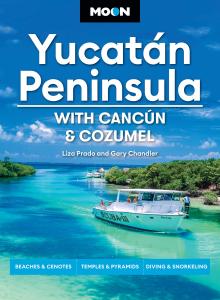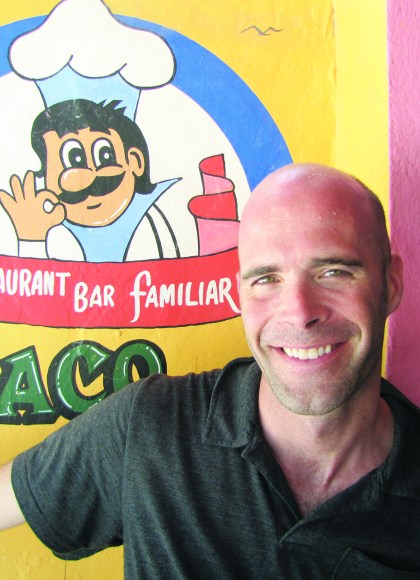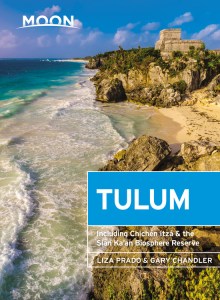Tulum Beaches and Cenotes
Tulum has all of the makings of a favorite getaway: idyllic beaches, oceanfront cabañas, and ancient Maya ruins perched on a cliff overlooking the turquoise sea—all without a mega-development in sight. Equally unexpected are the area’s numerous natural and ecological attractions. Whether you’re looking to bask in the sun on some of Mexico’s most beautiful stretches of sand or go swimming and snorkeling in freshwater cenotes, you’ll find plenty of opportunity to explore in Tulum.
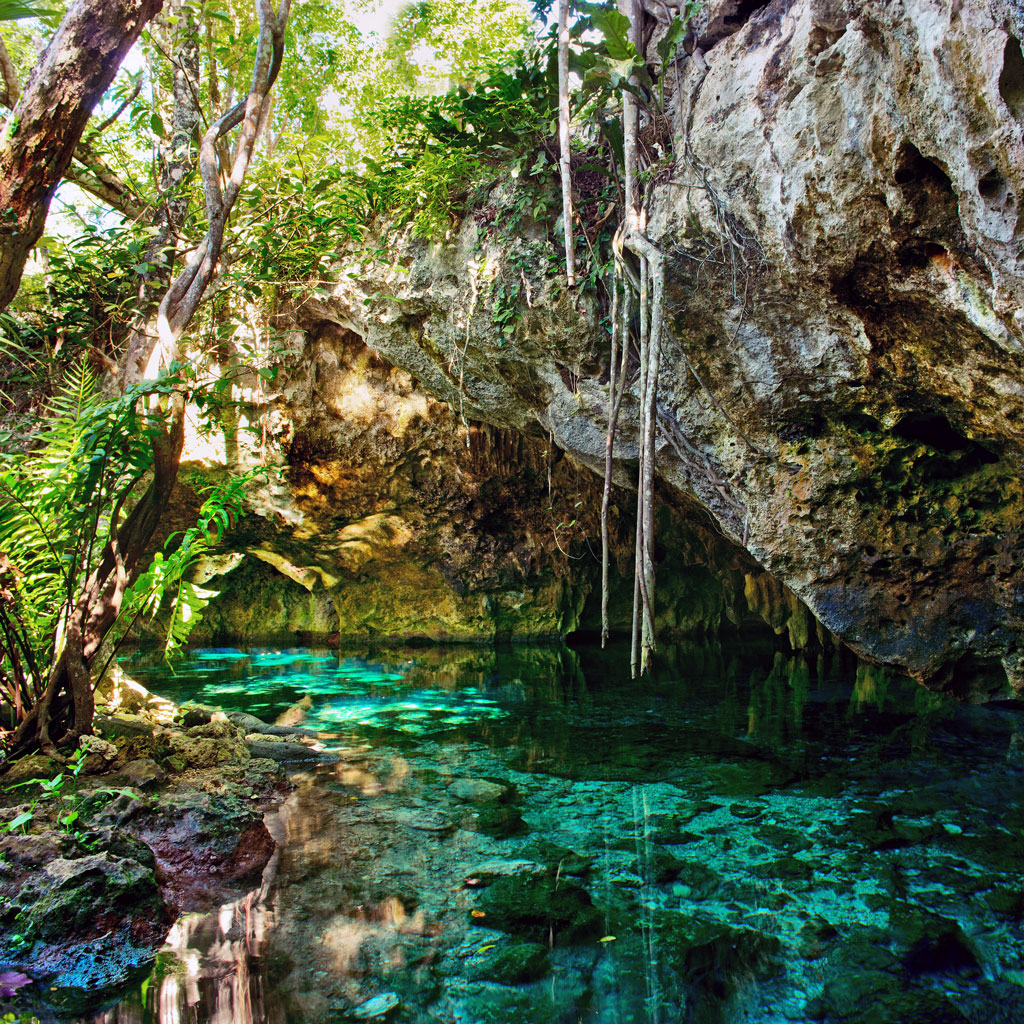
Tulum Cenotes
Dos Ojos, or Two Eyes, is a reference to twin caverns that are the largest openings—but far from the only ones—into the labyrinthine river system that runs beneath the ground here. You can snorkel on your own, but you’ll see a lot more on a guided snorkeling tour (no reservations required). There is no limit to the amount of time guests can stay; many bring food and drinks and make a day of it (there are hammocks, lockers, and a restaurant on-site too). Visitors also can dive at Dos Ojos but must bring their own equipment and guide; the two primary dive “lines” are technically cavern dives, ideal for those new to overhead environments. There are various other cenotes in the Dos Ojos system for much more challenging diving, including The Pit, at 40 meters the deepest dive site and with a spectacular halocline. (Each cenote has a separate entrance fee, which you should confirm with your dive shop.)
One of the only cenotes in the Zona Hotelera that’s open to the public, Cenote Encantado (aka Cenote Yax Chen) is a winding channel of cool clear water with freshwater plants along the edges. Measuring about 300 meters (984 feet) in length, it’s part of an intricate network of about 100 cenotes on the jungle side of Tulum. Three small hotels—Cabañas y Cenote Yaxchen, Cenote Encantado, and Hotel Maya Cabañas & Cenote—provide easy access and rent kayaks and snorkel gear to better explore it. Look for schools of tiny fish (and some say baby crocs) in the water as well as herons in the low-hanging trees.
Other favorite cenotes include Zazil Ha, Car Wash, Gran Cenote, and Calavera Cenote (all west of Tulum on the road to Cobá); Cristal and Escondido (Hwy. 307 just south of Tulum); Casa Cenote (at Tankah Tres); and Cenote Cristalino, Jardín del Edén, and Cenote Azul (Hwy. 307 just north of Xpu-Há). All can be visited on a tour or by yourself, and most have snorkel gear for rent. Most are on private or ejido (collective) land and charge admission fees. If you take a tour, ask if admission fees are included in the rate. Most cenotes are open 8am-5pm daily.
Newsletter Signup
By clicking ‘Sign Up,’ I acknowledge that I have read and agree to Hachette Book Group’s Privacy Policy and Terms of Use
Tulum’s Northern Beaches
The road from Tulum Pueblo hits the coast near the upper end of the Zona Hotelera, which stretches from the archaeological zone down to the entrance of the Sian Ka’an reserve, almost exactly 10 kilometers (6 miles). The area north of the Tulum/Zona Hotelera junction has two easy-to-reach beach areas that are ideal for people staying in town. There is plenty of open space to lay out your own towel as well as a handful of beach clubs if you’re looking for lounge chairs and food services.
Playa El Paraíso is the most popular beach club on the north end of Tulum. Once little more than a bar and some hammocks, it has morphed into a bustling expanse of lounge chairs, beach beds, and umbrellas, with waiters weaving between them and the full restaurant and beach bar. It’s busy but still scenic and relaxing.
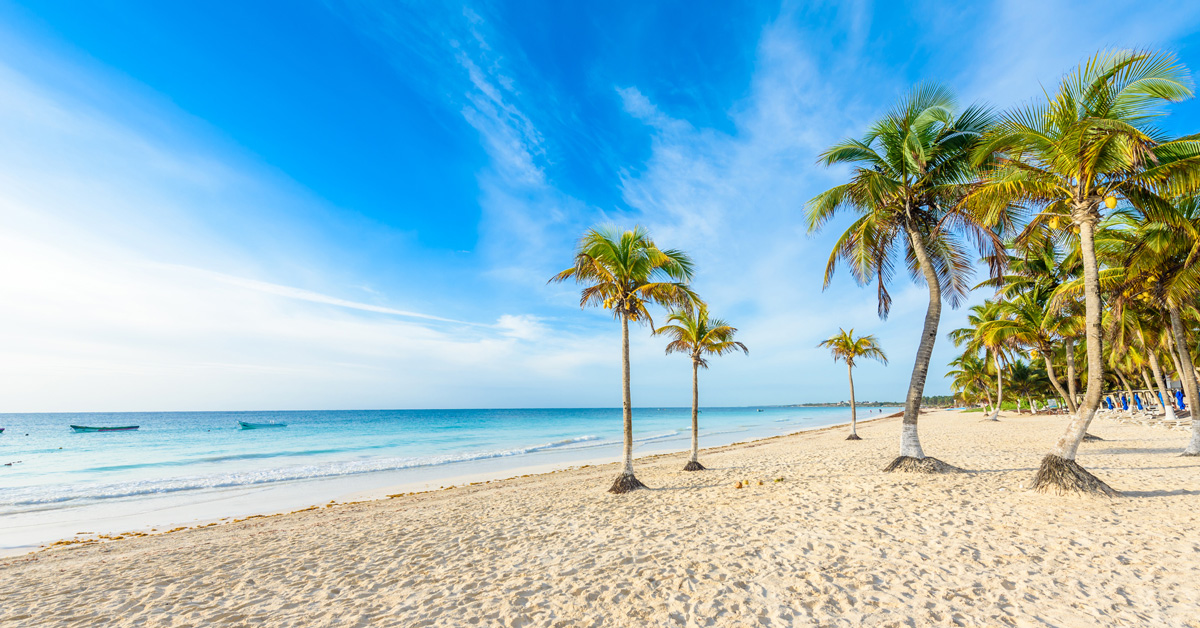
Directly north of Playa El Paraíso is Playa Mar Caribe, named after the rustic bungalows that have long fronted this portion of beach. Broad and unspoiled, this is a great place to lay out your towel on the soft white sand, which you share with a picturesque array of moored fishing boats. There are few services here—mostly beachfront kiosks—so be sure to bring snacks and plenty of water.
South of Playa El Paraíso, Pocna Beach Club fronts a quiet stretch of beach with lots of beach beds for lounging (US$25 per four people). Get here early to stake out a spot and to enjoy the all-you-can eat breakfast buffet with loads of fresh fruit, breads, freshly squeezed OJ, and, almost best of all, bottomless coffee. There’s free parking for clients.
Start planning your Tulum getaway
Tulum’s Southern Beaches
Tulum’s very best beaches—thick white sand, turquoise-blue water, gently bending palm trees—are toward the southern end of the Zona Hotelera. Not surprisingly, Tulum’s finest hotels are in the same area, and there are no official public access points. That said, hotels rarely raise an eyebrow at the occasional nonguest cutting through to reach the beach. You can also grab breakfast or lunch at one of the hotel restaurants and cut down to the beach afterward; in some cases, you can even use the lounge chairs.
Aimed at an older crowd, Ana y José Beach Club is located about a kilometer (0.6 mile) north of the resort of the same name and is open to guests and nonguests alike. An airy, sand-floored dining area serves mostly seafood, including ceviche, shrimp cocktail, and grilled fish, at decent prices, and there is a full bar. Chaise lounges and four-poster beach beds are arranged a bit too close together, but they are comfy and relaxing nonetheless.
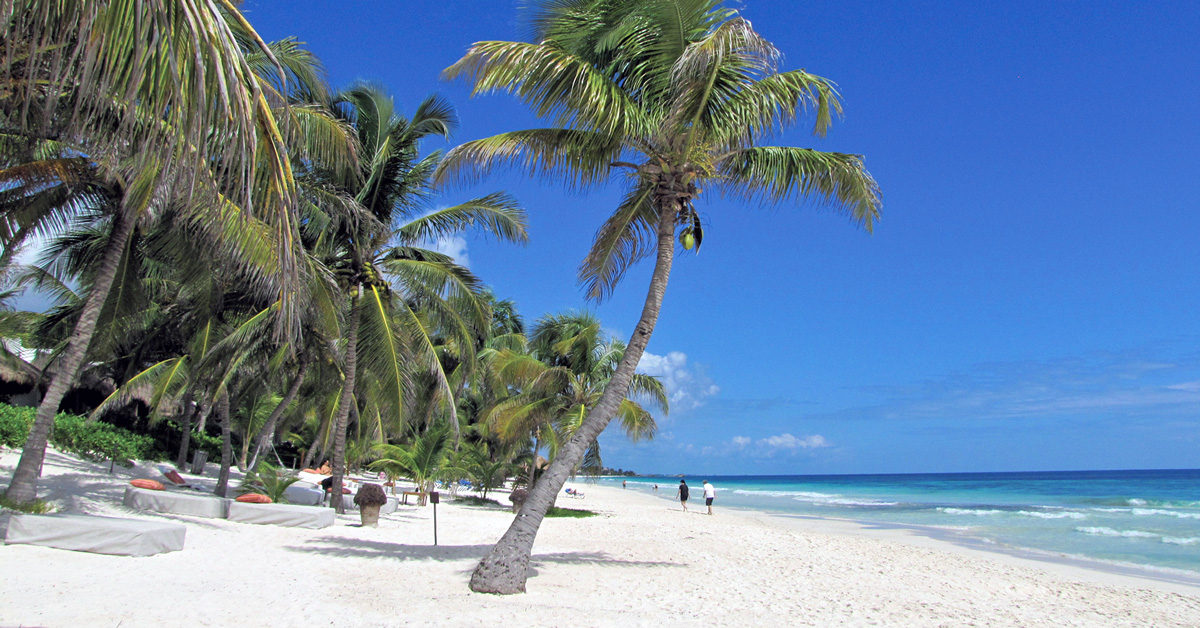
Ziggy Beach is a mellow beach club with rows of thick queen-size beach beds and lounge chairs plus hammocks strung from palm trees. They’re free to use if you buy something from the restaurant-bar. (Drinks often come with a complimentary round of chips and salsa, too). The beach, as expected, is gorgeous. Service is personable and efficient.
A popular spot for weddings, Ak’iin Beach Club is truly a beautiful place. A wood-plank walkway snakes through the leafy property before arriving at the white-sand beach. Along the way, guests pass the restaurant, a spacious high-roofed palapa structure with a solid menu of Mexican and international dishes. There’s also a two-for-one happy hour 5pm-7pm most days. Like neighboring beach clubs, use of the comfy beach couches, beds, and chairs are complimentary with the purchase of pretty much anything on the menu.
Maxa Camp Beach Club is a bohemian-chic beach club that’s a part of the Venado Azul glamping site (the huge tents are on the north side of the property). Beach beds and huge cushions are set up on the sand, with gourmet Mayan-inspired meals served in a rustic oceanfront restaurant. Driftwood art, flowing bolts of cloth, and dream catchers abound. Admission is free with purchase of food or drink.
Newsletter Signup
By clicking ‘Sign Up,’ I acknowledge that I have read and agree to Hachette Book Group’s Privacy Policy and Terms of Use
Pin it for Later

